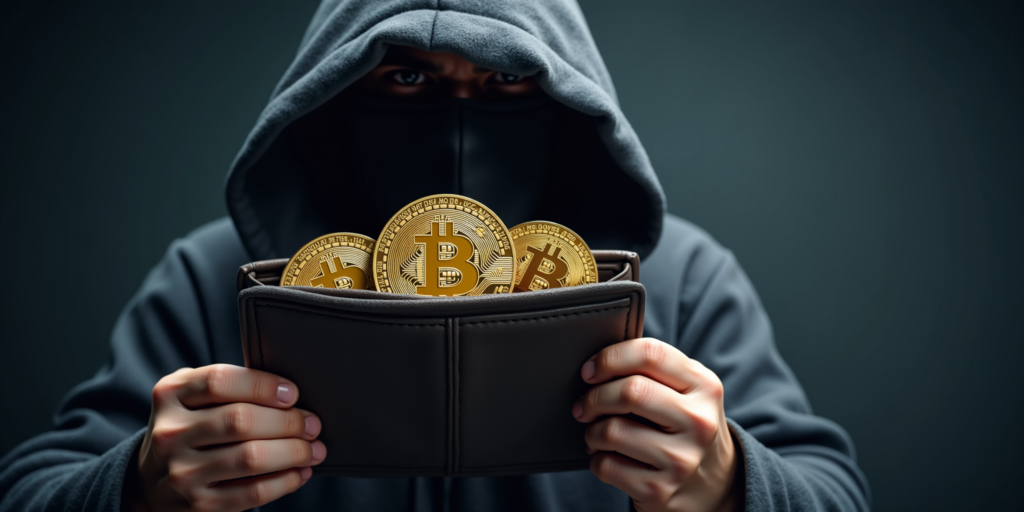Cryptocurrency is no longer just a buzzword — it’s becoming a mainstream financial tool. Learning how to buy crypto is essential as digital currencies like Bitcoin and Ethereum are increasingly used for investing, online purchases, and even sending money across borders with lower fees. Major companies, financial institutions, and even governments are exploring crypto’s potential, fueling its rapid adoption worldwide.
Despite its growing popularity, buying cryptocurrency for the first time can feel overwhelming. The process involves choosing a platform, setting up a wallet, and understanding market volatility — all of which may seem complex to beginners. However, the reality is that buying crypto is easy. With the right guidance, anyone can make their first purchase with confidence.
This guide is designed to simplify the process, breaking it down into clear, actionable steps. Whether you’re looking to invest, explore blockchain technology, or just own a piece of the digital future, this beginner-friendly walkthrough will help you get started with confidence.
Understanding Cryptocurrency Basics
At its core, cryptocurrency is a type of digital money that exists purely online. Unlike traditional currencies such as the U.S. dollar or the euro, cryptocurrencies are decentralized, meaning they are not controlled by any government or central authority. Instead, they rely on blockchain technology — a secure and transparent digital ledger that records all transactions.
Because cryptocurrencies are digital, they can be sent, received, and stored electronically without the need for banks or intermediaries. Transactions are verified by a network of computers, ensuring security and preventing fraud.
Common Types of Cryptocurrencies
There are thousands of cryptocurrencies, but here are the most well-known types:
Bitcoin (BTC)
The first and most well-known cryptocurrency, often referred to as “digital gold.” Many see Bitcoin as a long-term investment and a store of value.
Ethereum (ETH)
More than just a digital currency, Ethereum enables smart contracts and decentralized applications (DApps), making it a foundation for many blockchain projects.
Stablecoins
These are cryptocurrencies designed to maintain a stable value by being pegged to traditional assets like the U.S. dollar. Examples include USDT (Tether) and USDC (USD Coin). They are often used for transactions and reducing exposure to market volatility.
Altcoins
This refers to any cryptocurrency other than Bitcoin. Some well-known altcoins include Solana (SOL), Cardano (ADA), and Binance Coin (BNB), each with unique features and purposes.
Why Do People Buy Crypto?
People buy cryptocurrency for various reasons, depending on their goals and interests:
- Investment – Many view crypto as a long-term investment, hoping that the value of coins like Bitcoin and Ethereum will increase over time.
- Trading – Some people actively trade cryptocurrencies, buying low and selling high to profit from price fluctuations.
- Payments & Transactions – Cryptocurrency allows for fast, low-cost international transfers, making it useful for cross-border payments. Some businesses even accept Bitcoin and other digital currencies as payment.
- Decentralized Finance (DeFi) – Crypto enables users to participate in DeFi platforms, where they can lend, borrow, and earn interest without relying on traditional banks.
- NFTs & Gaming – Ethereum and other blockchains support non-fungible tokens (NFTs) and crypto-based gaming, where users can buy, sell, and trade digital assets.
- Hedging Against Inflation – In some countries, people use Bitcoin and stablecoins as a way to protect their wealth from currency devaluation.
Whether you’re looking to invest, trade, or simply explore the world of digital assets, understanding the basics of cryptocurrency is the first step toward making informed decisions. The next step is figuring out which type of cryptocurrency is right for you.
Choosing the Right Crypto to Buy
With thousands of cryptocurrencies available, selecting the right one for your first purchase can seem overwhelming. The key is to choose based on your goals, risk tolerance, and an understanding of the market.
Factors to Consider When Choosing a Cryptocurrency
- Market Trends – Pay attention to how a cryptocurrency has performed over time. While past performance doesn’t guarantee future success, established coins like Bitcoin and Ethereum have shown resilience and long-term growth.
- Use Cases & Utility – Some cryptocurrencies serve as digital money (Bitcoin), while others power smart contracts (Ethereum) or enable DeFi applications. Consider whether the crypto you’re buying has real-world use and demand.
- Volatility & Risk – Cryptocurrency prices can be highly volatile, with some assets experiencing large swings in value. If you prefer stability, you might opt for a stablecoin like USDC, while those looking for potential growth may choose Bitcoin or an altcoin.
- Community & Adoption – A strong community and widespread adoption can indicate a cryptocurrency’s long-term viability. Coins that are supported by major exchanges, developers, and businesses often have better staying power.
Researching a Cryptocurrency Before Purchasing
Before buying any cryptocurrency, doing your own research (often called “DYOR” in the crypto community) is crucial. Here’s what to look into:
- The Project’s Purpose – What problem does the cryptocurrency solve? Read the project’s whitepaper (an official document explaining its purpose and technology).
- Team & Developers – A strong team with a history of success in blockchain or finance increases the chances of a project’s success.
- Market Performance & Historical Trends – Look at price history, trading volume, and past volatility to get an idea of how the coin has performed.
- Community & Adoption – A large, active community and support from reputable exchanges indicate that the cryptocurrency has real traction.
- Regulatory & Security Risks – Some cryptocurrencies face regulatory uncertainty or have been involved in security breaches. Checking past security incidents can help you avoid risky investments.
- Roadmap & Future Plans – Reviewing the project’s roadmap can provide insight into future development and potential growth.
By taking the time to research and understand the different types of cryptocurrencies, you’ll be better equipped to make an informed decision about your first purchase. Next, we’ll walk through selecting a safe and reliable platform for buying crypto.
Selecting a Crypto Exchange or Platform
Once you’ve decided which cryptocurrency to buy, the next step is choosing a platform where you can make your purchase. This is where crypto exchanges come in.
What is a Crypto Exchange?
A cryptocurrency exchange is an online platform that allows users to buy, sell, and trade digital assets. Think of it as a stock exchange, but for cryptocurrencies instead of stocks. Exchanges act as intermediaries, matching buyers and sellers while providing the tools needed to complete transactions.
Related: Silk Road Bitcoin Wallets Wake After 10 Years, Move $3M Suddenly
There are two main types of crypto exchanges: Centralized Exchanges (CEXs) and Decentralized Exchanges (DEXs).
Types of Crypto Exchanges
Centralized Exchanges (CEXs)
A centralized exchange (CEX) is managed by a company or organization that facilitates crypto transactions. These platforms function similarly to traditional financial institutions, offering user-friendly interfaces, customer support, and security measures.
Pros:
✅ Easy to use, especially for beginners.
✅ Higher liquidity, meaning transactions are faster.
✅ Customer support and security features (like password recovery).
Cons:
❌ Requires identity verification (KYC – Know Your Customer).
❌ Users do not have full control over their crypto unless withdrawn to a wallet.
Decentralized Exchanges (DEXs)
A decentralized exchange (DEX) operates without a central authority, allowing users to trade crypto directly with one another through smart contracts. These platforms do not require user accounts, and transactions happen entirely on the blockchain.
Pros:
✅ No need for identity verification (more privacy).
✅ Users maintain full control of their funds.
✅ Less risk of exchange hacks.
Cons:
❌ More complex to use for beginners.
❌ Transactions may take longer due to lower liquidity.
❌ No customer support—users are responsible for their own security.
Key Factors When Choosing an Exchange
With so many exchanges available, it’s important to pick the right one for your needs. Here are some factors to consider:
- Security – Look for exchanges with strong security measures like two-factor authentication (2FA) and insurance on funds. Research their history to see if they have had past security breaches.
- Fees – Different exchanges charge fees for trading, deposits, and withdrawals. Check the fee structure to avoid unexpected costs.
- User-Friendliness – Beginners should opt for an exchange with a clean, intuitive interface that makes buying and selling crypto simple.
- Supported Cryptocurrencies – Not all exchanges offer the same coins. Ensure the platform supports the cryptocurrency you want to buy.
- Customer Support – If you ever run into issues, having access to reliable customer support can make a big difference.
How to Buy Crypto and Set Up Your Account
Now that you’ve chosen a crypto exchange, the next step is setting up your account, securing it, and funding it so you can make your first purchase. Here’s a step-by-step guide to getting started.
Creating an Account
Signing up for a cryptocurrency exchange is similar to opening an account with an online bank or stock trading platform. You’ll need to provide an email address, create a strong password, and agree to the platform’s terms and conditions. Some exchanges allow basic account creation with just an email, but to fully access trading features, you’ll need to complete identity verification.
Identity Verification (KYC Requirements)
Most centralized exchanges (CEXs) require Know Your Customer (KYC) verification to comply with financial regulations. KYC helps prevent fraud, money laundering, and illicit activities. The process typically involves:
- Submitting personal details – Name, date of birth, and address.
- Uploading identification – A government-issued ID (passport, driver’s license, or national ID).
- Proof of residency – Some exchanges require a utility bill or bank statement.
- Facial verification – Some platforms ask for a selfie or video verification to confirm identity.
KYC verification can take anywhere from a few minutes to a few days, depending on the exchange. Once approved, you’ll have access to all features, including buying and withdrawing crypto.
Funding Your Account: Payment Methods
Once your account is set up and secured, it’s time to deposit funds so you can buy crypto. Different exchanges offer various payment options, each with its own advantages:
- Bank Transfer (ACH, SEPA, Wire Transfer) – Often has lower fees but can take a few days to process.
- Credit/Debit Card – Convenient and fast, but usually comes with higher fees (3%-5% per transaction).
- PayPal & Other E-Wallets – Available on select exchanges, offering a quick and easy funding option.
- Crypto Deposits – If you already own crypto, you can transfer funds from another wallet or exchange.
How to Buy Crypto: Making Your First Purchase
Now that your exchange account is set up and funded, it’s time to buy your first cryptocurrency. This process is straightforward and usually takes just a few minutes.
Step 1: Log Into Your Exchange Account
Go to the cryptocurrency exchange you signed up for and log in securely. Make sure you have Two-Factor Authentication (2FA) enabled to protect your account.
Step 2: Navigate to the Buy/Sell Section
Most exchanges have a dedicated “Buy Crypto” or “Trade” section. This is where you can select the cryptocurrency you want to purchase and choose how you want to pay.
Related: British Hacker Danny Khan Suspected Caught in Dubai With $18.5M Crypto
Step 3: Choose the Cryptocurrency You Want to Buy
Select the crypto you wish to purchase (e.g., Bitcoin (BTC), Ethereum (ETH), or a stablecoin like USDC). If you’re a beginner, sticking with well-known cryptocurrencies can be a safer choice.
Step 4: Decide on the Order Type (Market vs. Limit Orders)
When buying crypto, you’ll typically see two types of orders:
Market Order (Instant Purchase)
A market order buys the crypto immediately at the current market price. This is the fastest and easiest option for beginners. However, since crypto prices fluctuate constantly, the exact price you pay may differ slightly from what you see on the screen.
✔ Best for: Beginners who want to buy quickly
✘ Downside: You may pay slightly more if the price moves up before the order executes
Limit Order (Set Your Own Price)
A limit order allows you to set the price you’re willing to pay. Your purchase will only go through if the crypto’s market price matches or drops to your chosen price.
✔ Best for: Investors who want more control over their purchase price
✘ Downside: Your order may not be completed if the price doesn’t reach your target
For your first crypto purchase, a market order is usually the simplest option.
Step 5: Enter the Amount You Want to Buy
Decide how much crypto you want to purchase. Most exchanges allow you to enter a specific amount in your local currency (e.g., $100) or in crypto (e.g., 0.002 BTC).
💡 Tip: If you’re new to crypto, start with a small amount to get comfortable with the process before investing more.
Step 6: Review and Confirm Your Purchase
Before completing the transaction, carefully review:
✔ The type of cryptocurrency you’re buying
✔ The amount you’re purchasing
✔ The total cost, including any fees
✔ The payment method
Once everything looks correct, confirm your purchase. If you’re using a bank transfer or another manual payment method, you may need to wait for the funds to clear before receiving your crypto.
Step 7: Check Your Balance
After completing your transaction, your newly purchased cryptocurrency should appear in your exchange account under “Wallet” or “Portfolio.” Some exchanges may take a few minutes to process the transaction, especially during high traffic periods.
What’s Next? Storing Your Crypto Safely
Now that you know how to buy crypto and purchased your first, think about how to store and manage it securely. You have two options:
- Keeping it on the exchange – This is the easiest, especially if you plan to trade frequently. However, leaving your crypto on an exchange exposes you to risks such as exchange hacks, frozen accounts, or security breaches.
- Transferring it to a secure wallet – For long-term storage, using a crypto wallet gives you full control over your assets. You can choose between a hot wallet (connected to the internet, like MetaMask or Trust Wallet) or a cold wallet (offline, like a hardware wallet such as Ledger or Trezor) for maximum security.
Conclusion
Buying cryptocurrency for the first time might seem complex, but once you break it down into steps, it becomes a straightforward process. From choosing the right cryptocurrency to selecting a secure exchange and making your first purchase, you now have the knowledge to confidently enter the crypto space.
However, owning crypto also comes with responsibility. Beyond just making a purchase, you must store your assets securely, stay informed about the market, and be cautious of scams and risks. As the crypto industry continues to evolve, so will your understanding of how to navigate it.












